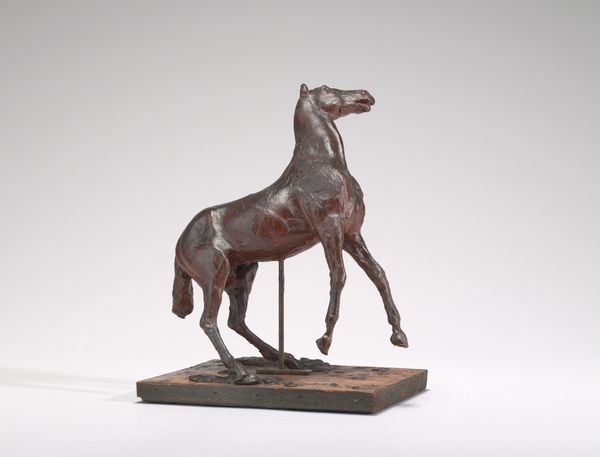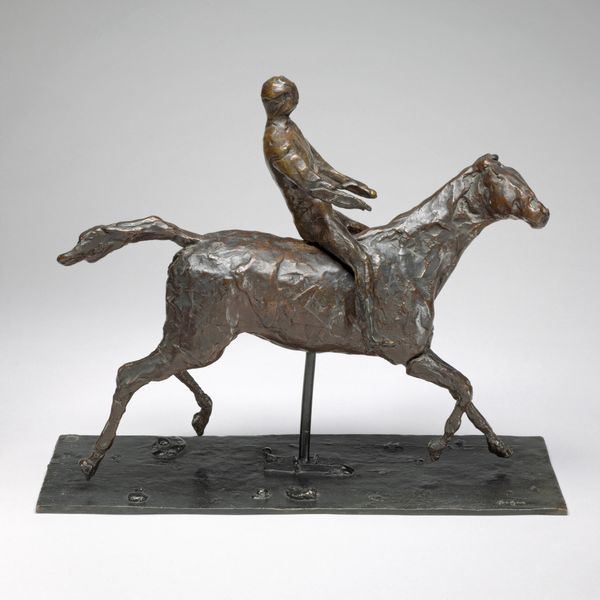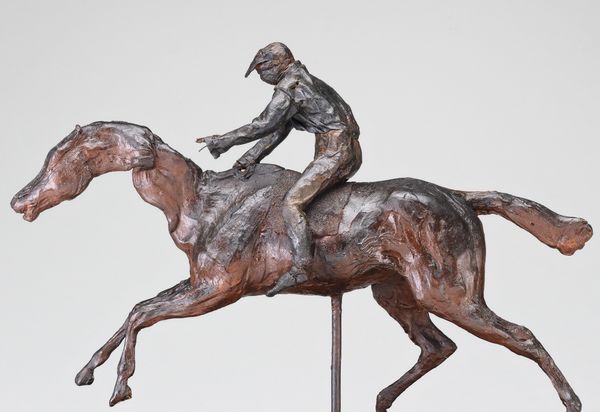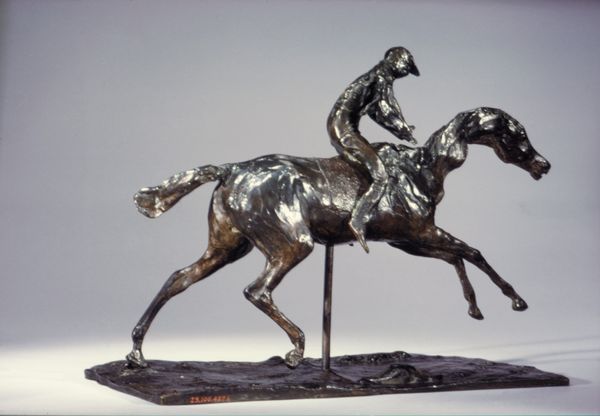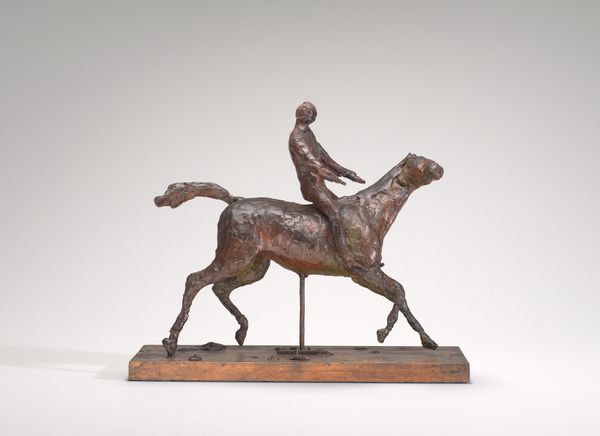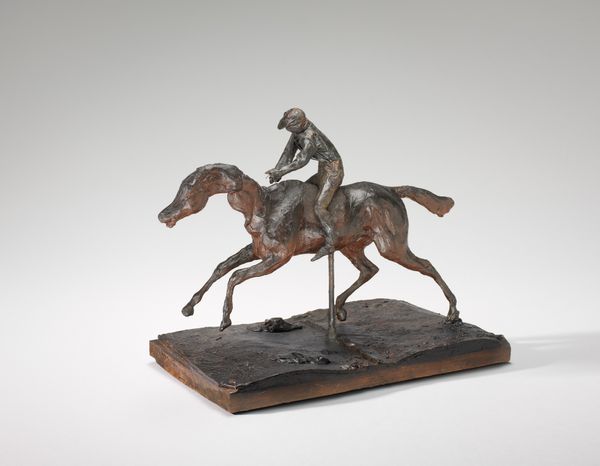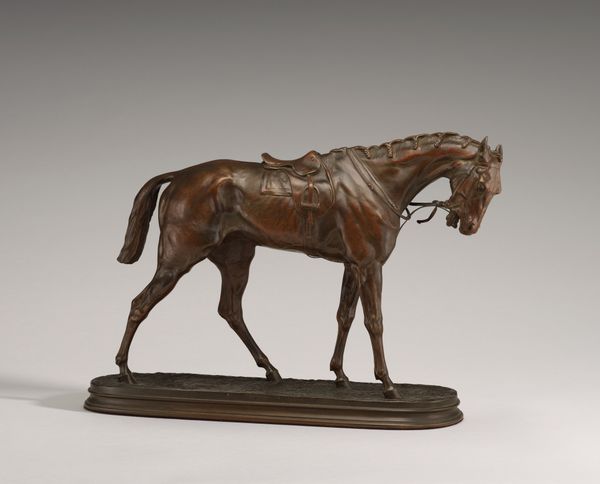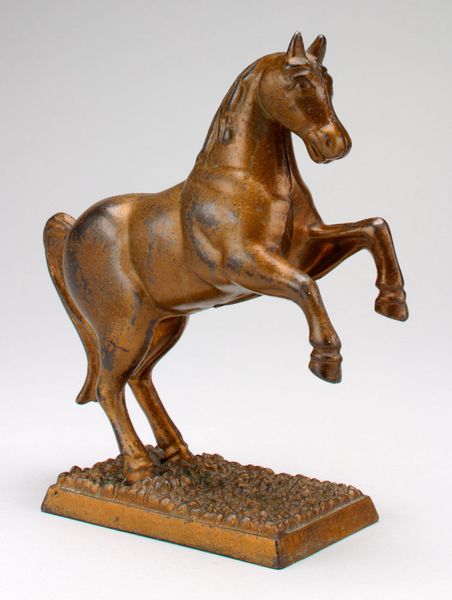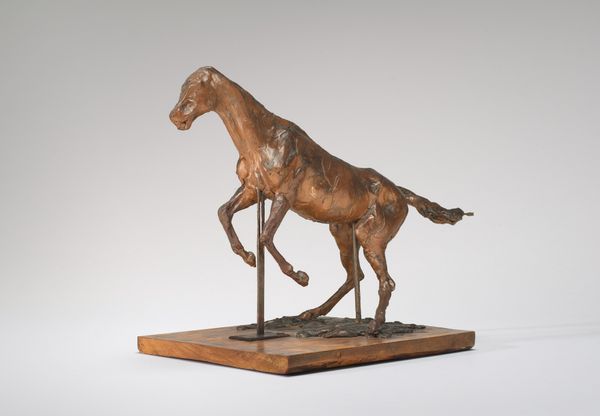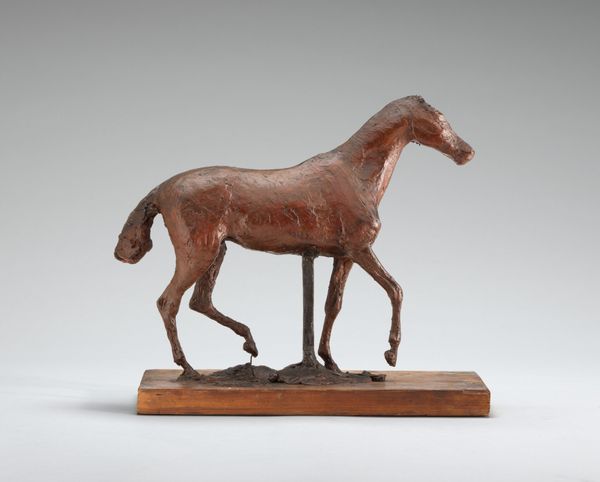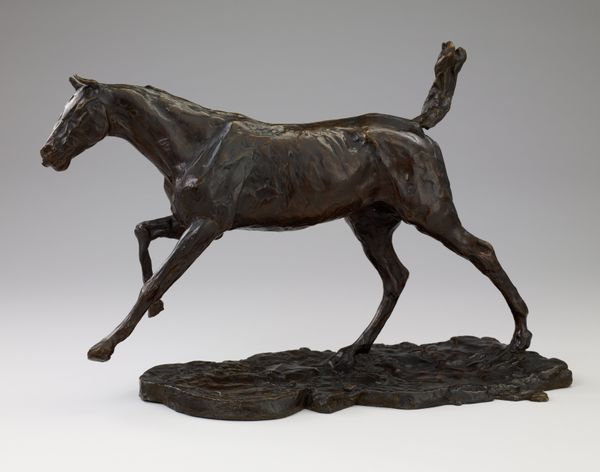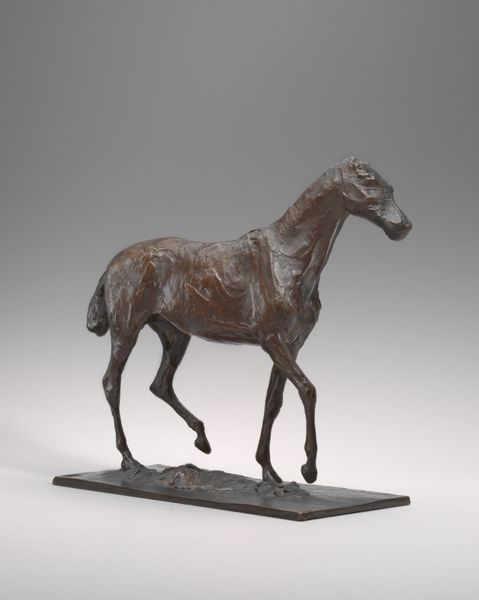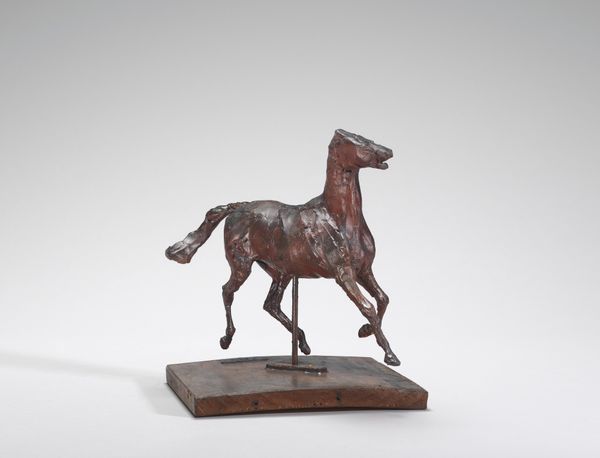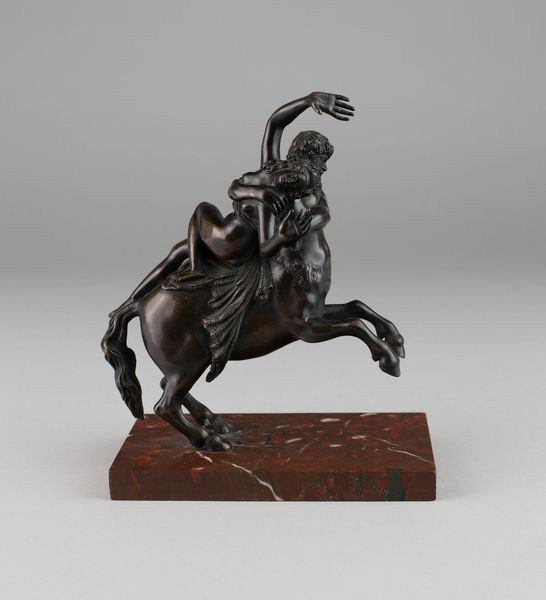
bronze, sculpture
#
statue
#
impressionism
#
sculpture
#
bronze
#
charcoal drawing
#
figuration
#
form
#
sculpture
Dimensions: overall without base: 19.4 x 9.7 x 9.8 cm (7 5/8 x 3 13/16 x 3 7/8 in.)
Copyright: National Gallery of Art: CC0 1.0
Editor: This is Degas's bronze sculpture, "Jockey," from the mid-1870s. There's a sense of contained energy, a fleeting moment captured. The way the horse and rider lean forward really conveys movement. How do you interpret this work, especially considering the time it was made? Curator: Degas's "Jockey" exists within a complex historical context. Consider the rise of equestrian culture in the 19th century, inextricably linked with wealth and power. Horse racing was a spectacle, a stage for displays of social dominance. How does Degas’s depiction engage with, or perhaps critique, that spectacle? Editor: I see the speed and athleticism, but the jockey himself seems almost… anonymous. Not idealized at all. Curator: Precisely! It is not just a celebration of the sporting world. Instead, consider how Degas subtly undermines the heroic ideal often associated with equestrian statues. He highlights the physicality and even the precariousness of the jockey’s position. What does the surface texture, the visible marks of the artist's hand, suggest to you about Degas’s artistic priorities? Editor: That it's more about the process, maybe? The fleeting impression rather than a polished, finished monument? Almost as if he’s making us aware of the labor involved. Curator: Yes! We need to recognize that this artwork not only depicts a jockey on a horse, it gives us the idea of what athleticism entails in this time and location. By acknowledging the physicality, labor, and social structures surrounding this artwork, we gain a far more nuanced understanding. Editor: That’s a completely different way of seeing it. It is much more than just the depiction of the jockey. Curator: Exactly. By interrogating its social context, we start to think critically about representation, power, and the artist’s own role in shaping our perceptions.
Comments
No comments
Be the first to comment and join the conversation on the ultimate creative platform.
